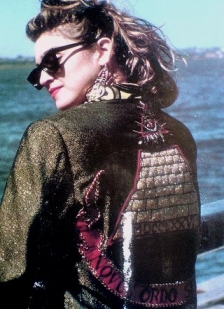I haven’t got time to do a real report on this important subject in conspiracy theory but I’ve been away from the desk for too long. So I will synthesize some facts. The short idea is that Catherine the Great seems to have been considered an ‘enlightened despot’ by figures like Thomas Jefferson and Voltaire, but the apparent strategic aim was not necessarily the betterment of mankind, but rather the diminishing of the power of Russia’s 18th century rivals, Britain and France. While Catherine ‘talked a good game’ on democracy and abolition, the evidence is that under her, the serfs of Russia fared much more poorly. In a similar sense, it can objectively be seen that the Bolshevik Revolution and emergence of the Soviet state did not serve man any better either. (Additional background of pertinence can be found here.)
- The Jesuit priest Abbe Barruel controversially claimed the Bavarian Illuminati (Les Illuminés de Bavière) were the conspirators behind the French Revolution in his book ‘Memoirs Illustrating the History of Jacobinism‘. The Bavarian Illuminati were essentially a sect which seems to have penetrated / sprung up within other Masonic movements.
- In his book, Barruel claimed that Empress Catherine the Great of Russia (Catherine II) was a conspirator in the French Revolution in association with Voltaire who she had significant correspondence with. (It seems a sect of ‘Russian Voltairians‘ sprung up encouraged by Catherine and set out “to elaborate a new morality based on reason but not on Christian ethics“, and foster a “religion of reason“. This became the basis for the first Russian secret lodges formed in the 1770s.)
- Later, additional likely anti-Semitic forgeries circulated in Russia which seemed to attempt to shift blame for the revolution in France to Jews and Freemasons (see ‘Simonini Letter‘). This may have pertinence to the evolution of generally Tsarist anti-Semitic conspiracy.
- Catherine the Great associated with the Roman goddess of strategic warfare, wisdom, and the arts: Minerva. Minerva was associated with owl symbolism. Initiates in the ‘Bavarian Illuminati’ used the rank of ‘Minervals’ and owl symbology in association with Minerva.
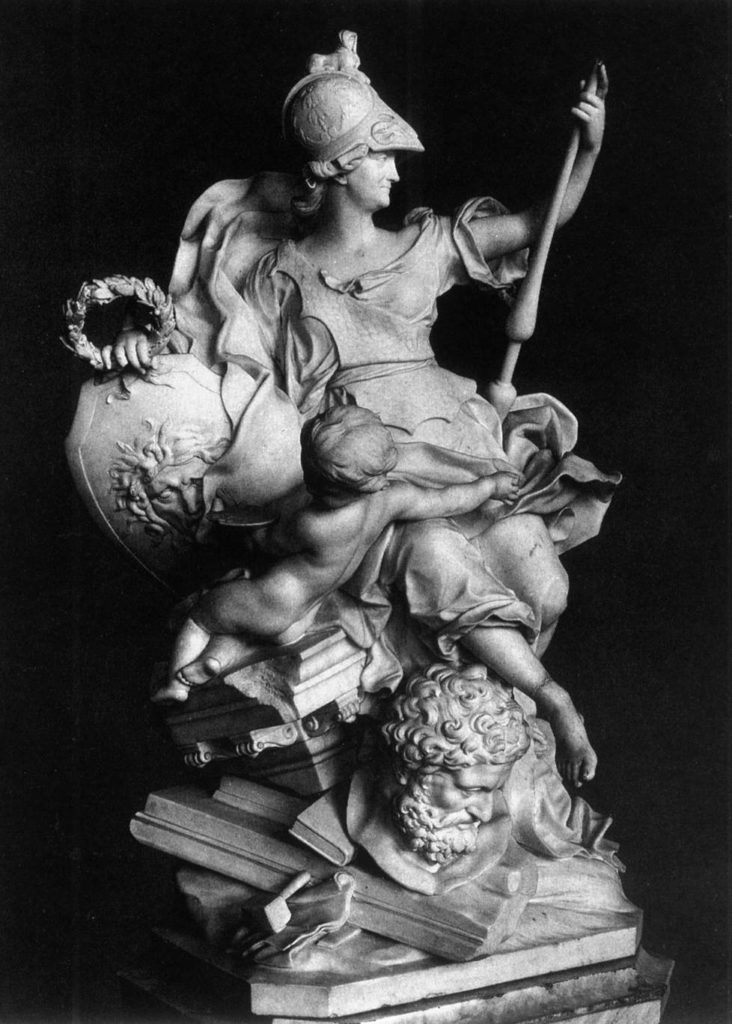
- Catherine the Great was closely associated with a mediation of the War of the Bavarian Succession, placing her in proximity and contemporaneity to the emergence of the Bavarian Illuminati. While Barruel’s interpretation of the French Revolution remains controversial, this would seem to support his hypothesis.
- Catherine the Great was influential in the development of ‘The Hermitage‘ art museum in 1764 in St. Petersburg, which was located at the ‘Winter Palace’. Catherine’s use of art at The Hermitage was a ‘calculated strategy’ related to ‘royal patronage as propaganda’. (Of course, this location had central significance to the later Bolshevik Revolution in Russia, a revolution which was related to “ending Russia’s brief flirtation with revolutionary democracy“.)
- Catherine’s supposed involvement in revolutions was not unprecedented. She had a clear role in the American Revolution. Figures like Benjamin Franklin and Thomas Jefferson closely associated with Russia. (While there are fake and conspiratorial Jefferson quotes aplenty, it seems true that) Jefferson described “Russia as the Power friendliest to the Americans” in the American revolutionary context. (If the quote is fake, it is still attributable to Russia as put forth in the book by N. Bolkhovtinov: Russia and the American Revolution.) Despite his apparent praise for Catherine the Great, Jefferson notably downplayed Barruel’s claims about the Illuminati as “the ravings of a Bedlamite“.
- The ‘Great Seal‘ of the United States incorporated the ‘All Seeing Eye’ atop a pyramid as a symbol which has come to be commonly — but controversially — associated with the Illuminati in the popular context.
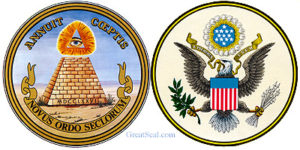
- The ‘All Seeing Eye’ (a.k.a. ‘The Eye of Providence’) was a “prevalent motif in the iconography of eighteenth-century Russia“, and represented military triumph as well as how the Russian leader was “invested with divine power“. The eye was frequently depicted in association with Catherine in art and coinage. It commonly appeared in Russia up until the time of the Bolshevik Revolution when many examples were destroyed in an iconoclastic fervor. (While the symbol seems to have a deeper Egyptological and Christian origin, it seems that many modern examples hew towards an Eastern European context.)
-
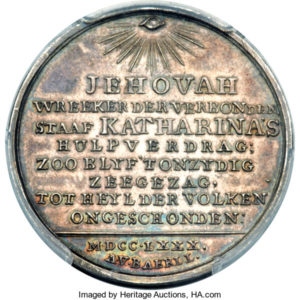
1780 Catherine the Great coinage with ‘All Seeing Eye’ 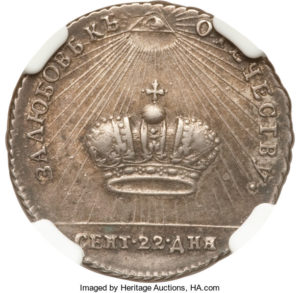
1762 Catherine the Great coinage with ‘All Seeing Eye’ 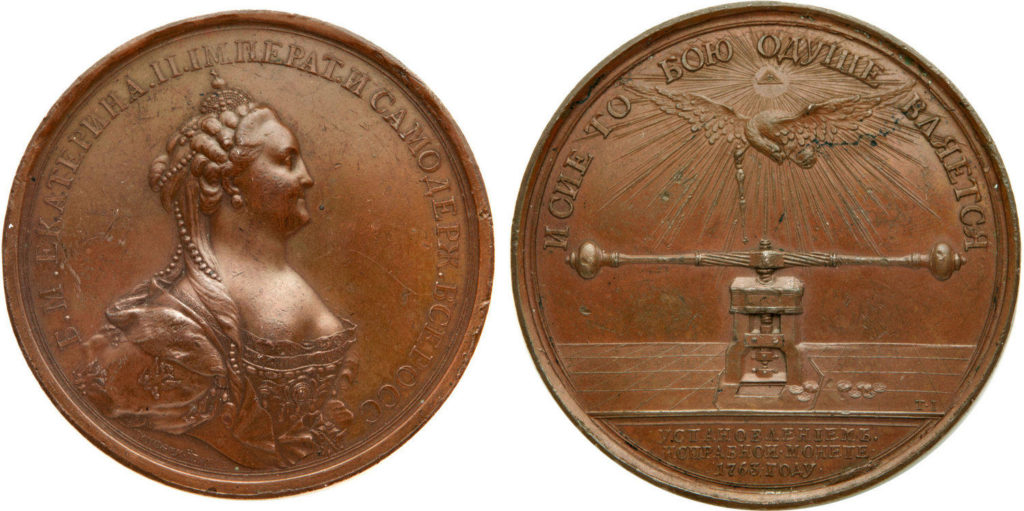
Yet another example - Similarly to The Hermitage’s Russian palatial origins, the Louvre was founded in a French palace and established on August 10, 1793: the one year anniversary of the abolition of the French Monarchy in the French Revolution. (Similarly, the Smithsonian was founded on August 10, 1846 based on the gift of James Smithson who had been considered at one time as a royalist (British) spy.)
- Andre Breton, founder of Surrealism who collaborated with the original head of Russian Red Army military intelligence: Leon Trotsky — and closely associated with the communist penetration of the French avant garde and ‘revolutionary art’ movements of pre-WWII Paris — was interested in the Illuminati (also see Victor Hugo). A direct connection was also made between Breton’s movement and the French Revolution. Breton’s ‘Les Deux Cents Familles’ (The Two Hundred Families) conspiracy theory shared many similarities with anti-Semitic conspiracy as fashioned in the Okhrana forgery ‘Protocols of the Learned Elders of Zion‘ but also incorporated more anti-capitalistic concepts which could be seen as benefiting a communist strategy.
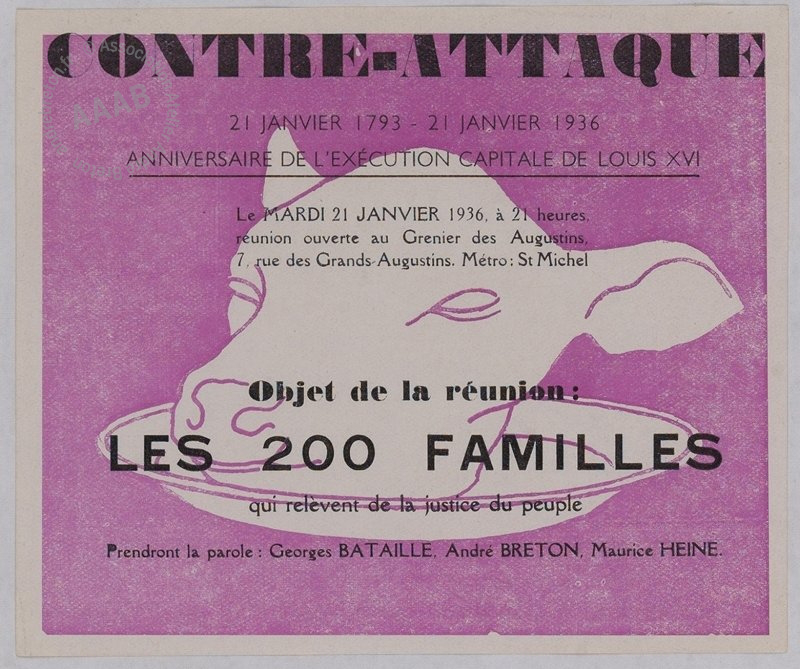
- Henry Wallace, who was connected to members of the Cambridge Five as well as probable Russian art influence agent Nicholas Roerich was apparently instrumental in the addition of the ‘All Seeing Eye’ from the Great Seal to the back of the dollar bill. While the eye was apparently added under the pretext of Masonic ideals, Wallace was also a Theosophist, which is a movement associated with Russian-Tsarist intelligence. (Many Theosophists, such as Wassily Kandinsky, uncle of known Russian-Stalinist spy Alexander Kojeve, were associated with Surrealism as well. A large group of such artists came to the US as the result of the efforts of Russian spies like Louis Dolivet and Noel Field.)
- There has been a generally ongoing association of the Illuminati with conspiracy theories in the modern times which are fairly easy to trace to Russian disinformation.
- (Note also that Vladimir Putin was first identified as Prime Minister of Russia on August 10, 1999 which may have some ongoing significance in parallel with the French revolutionary movement; despite his apparently anti-revolutionary persona. Putin seems to have acted on rehabilitating some of Catherine’s most notable accomplishments, such as the annexation of Crimea.)
